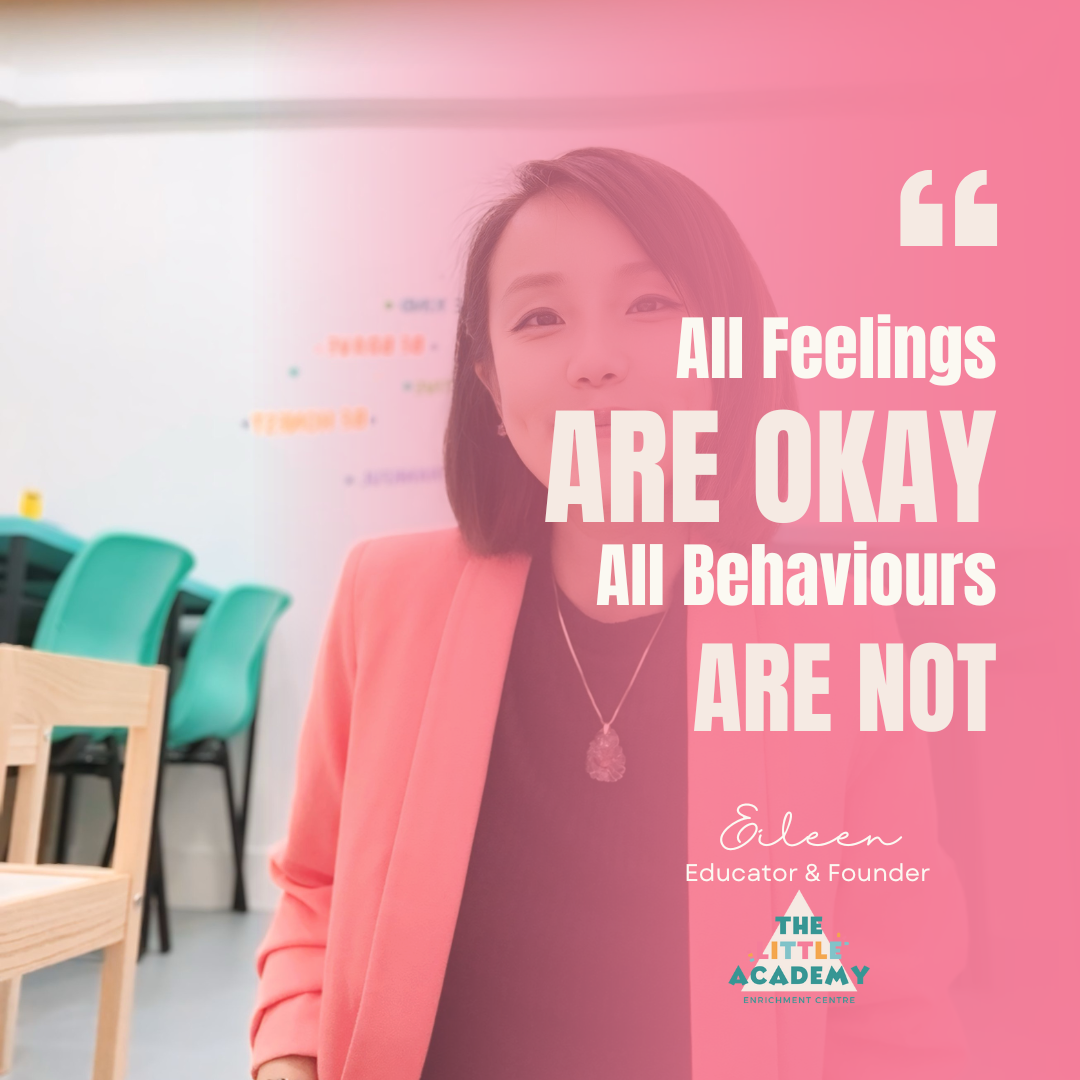All Feelings Are Okay, All Behaviours Are Not
Understanding Emotional Boundaries in Children (and Ourselves)
As an educator who works closely with young children, this simple phrase has become one of the most powerful truths I’ve learned and carried with me:
All feelings are okay. All behaviours are not.
It sounds straightforward, yet it can be deeply challenging, especially when emotions run high in a classroom or at home.
Growing Up Without Emotional Literacy
Many of us, particularly those raised in Asian households, grew up hearing things like:
❌ “Stop crying, or I’ll give you something to cry about.”
❌ “Big boys/girls don’t cry.”
❌ “Don’t be angry. It’s disrespectful.”
These statements, while often said with good intentions, taught us early on that some feelings are “wrong” or “bad.” We learned to suppress or hide how we truly felt. And what happens when we don’t allow ourselves to feel? We lose touch with our emotions — and in turn, with ourselves.
The Shift: Creating Emotionally Safe Spaces for Children
When I started my own healing journey, I began to realise how important it is to feel — without shame.
And this is exactly what we need to model and teach our children.
Children need to hear:
✅ “It’s okay to feel sad.”
✅ “It’s normal to feel angry when something is unfair.”
✅ “You’re disappointed? I understand. That can be hard.”
But allowing a feeling doesn’t mean allowing all behaviours that follow it.
This is where some confusion happens. In our efforts to be more emotionally supportive, sometimes we go to the other extreme — where everything is permitted in the name of feelings.
Example 1: The Angry Child
A child is angry because a peer took his toy.
He screams, throws the toy across the room, and starts pushing others.
How we respond matters:
-
❌ “Stop that! Don’t be angry!” (invalidates his feelings)
-
❌ “It’s okay, let him express himself!” (allows unsafe behaviour)
Instead, try:
✅ “I can see you’re really angry. It’s okay to feel that way. But it’s not okay to hurt others. Let’s calm down and talk about it.”
You’re acknowledging the feeling and setting boundaries on behaviour.
Example 2: The Overwhelmed Preschooler
A 4-year-old throws a tantrum because their parent says it’s time to leave a playdate.
Some parents might:
-
❌ Scold the child harshly, creating shame around their emotions.
-
❌ Let the tantrum go on without support, thinking the child needs to “express freely.”
Instead, what works better is:
✅ “You’re having so much fun, and it’s hard to leave. I understand. You can cry, but we still have to go. I’ll give you a hug when you’re ready.”
You’re showing empathy, but not removing the boundary.
Why This Balance Matters
Children are constantly learning about the world through the adults around them.
If we say feelings are bad, they’ll learn to suppress and ignore them.
If we allow all behaviours in the name of emotion, they’ll learn to use feelings to justify actions. Sometimes hurtful or harmful ones.
In both cases, they don’t learn how to regulate themselves.
But if we consistently show that:
-
Feelings are valid,
-
Boundaries are clear,
-
And calm support is available…
We teach children emotional literacy, resilience, and respect.
Teaching Empathy and Accountability
Here’s what this approach sounds like in everyday parenting and teaching:
-
✅ “You’re allowed to feel upset. But it’s not okay to yell at others.”
-
✅ “You’re disappointed, and that’s normal. Let’s find a way to handle it together.”
-
✅ “When you’re ready, I’m here to talk about it.”
These kinds of statements communicate:
💛 “I see you. I accept you. I’m here to guide you.”
A Note to Parents and Educators
We’re all learning, too.
Sometimes we snap.
Sometimes we react before we think.
Sometimes we struggle with our own big feelings.
But the more we practice pausing and reflecting before reacting, the more we model the very skills we want children to develop.
Let’s also be honest with ourselves:
It’s not the children who are getting “harder to teach”, it’s the environment they’re growing up in.
An overstimulated, fast-paced, high-pressure world, paired with emotional disconnection, is making it harder for them to navigate their own feelings.
We must slow down, tune in, and lead by example.
Final Thoughts
🌱 Children don’t need perfection.
They need presence.
They need boundaries, empathy, and role models who show them how to feel and still choose kind, respectful behaviour.
So the next time your child (or student) has a meltdown, try to pause and remember:
All feelings are okay. All behaviours are not.
How we respond will shape not only their emotional world, but ours too.




